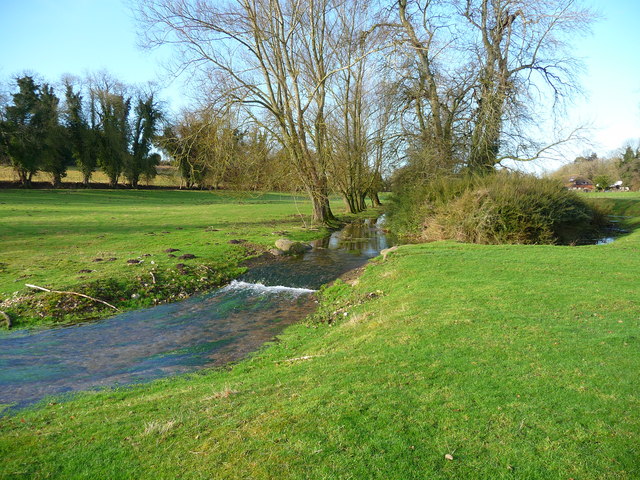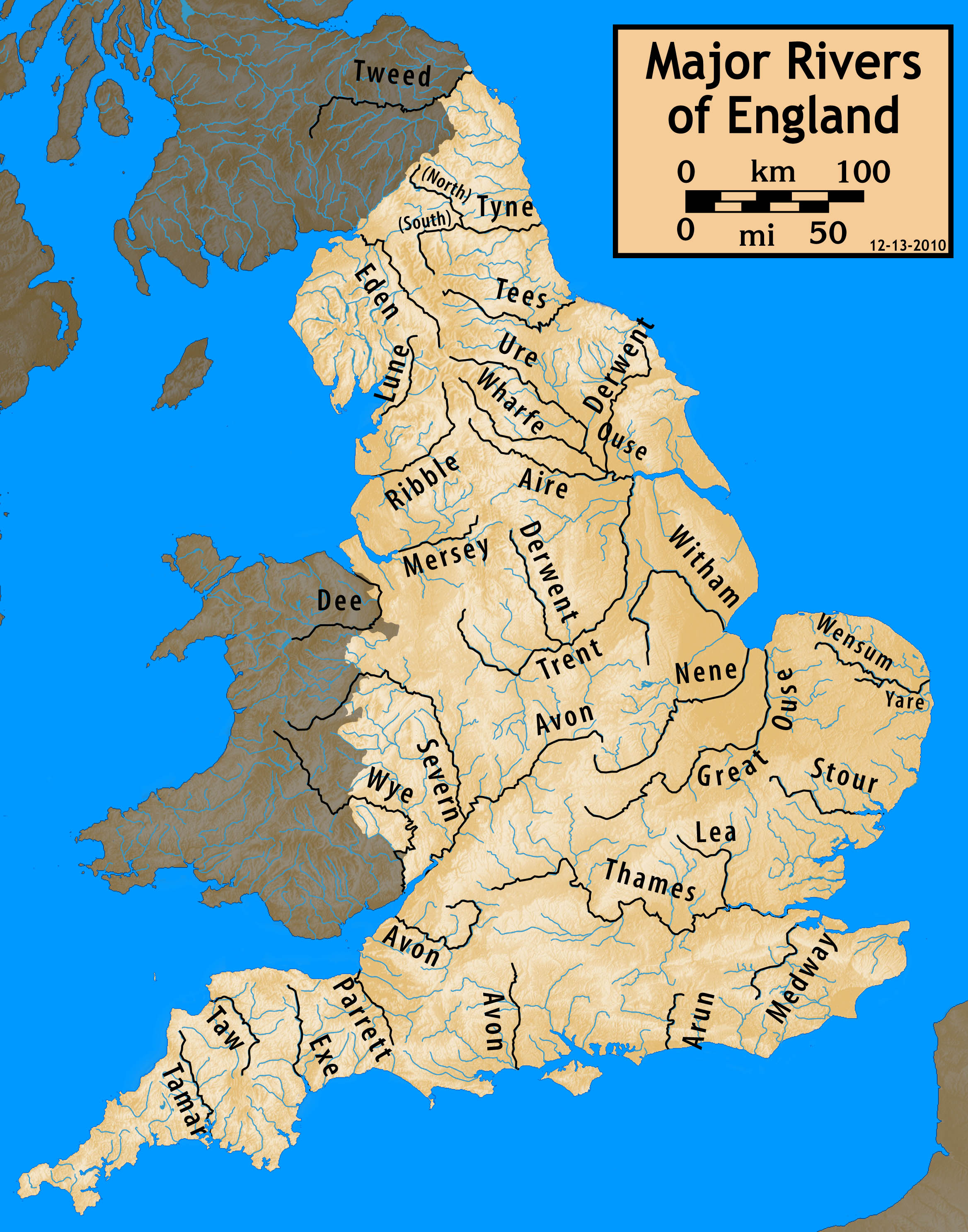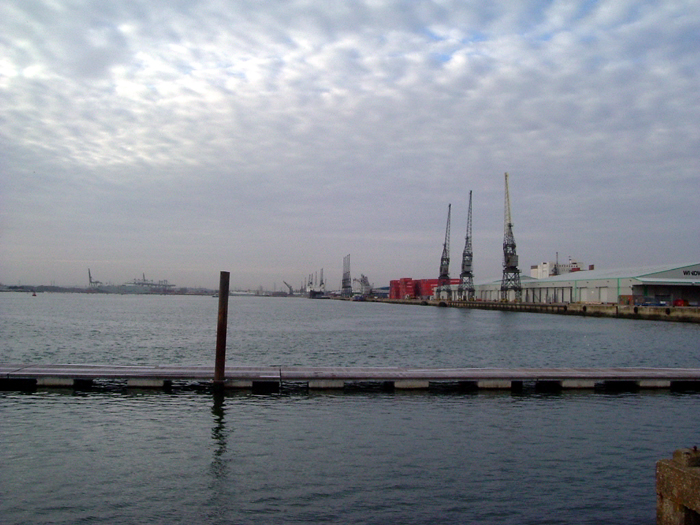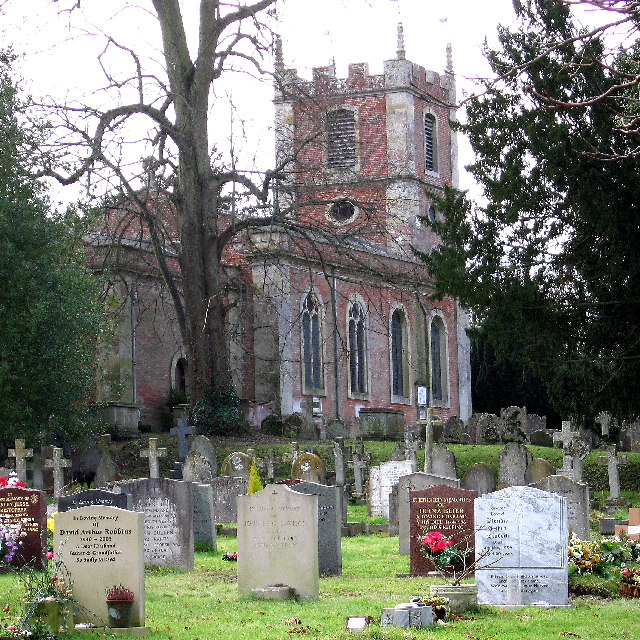|
Pillhill Brook
Pilhill Brook is a tributary of the River Anton in Hampshire, England. It is a chalk stream, known for its trout fishing. Toponymy The brook is believed to have been called the Ann, or Anna. The name ' is found in the Close Rolls in 1228. Course The brook rises near Fyfield and passes Thruxton before flowing through Anna Valley past the villages of Abbotts Ann, Little Ann and Amport, joining the River Anton near Upper Clatford, which flows in turn into the River Test. Industry in 1813, the brothers, Robert and William Tasker, set up the Waterloo Ironworks in the Anna Valley at Upper Clatford, using a waterwheel driven by the brook to power the forge. They specialised in making agricultural equipment, progressing to the manufacture of steam traction engines from 1865. There were four conventional watermills on the brook, Upper Mill at Monxton, Upper Mill at Abbots Ann, Abbots Ann Mill and Sarsons Mill at Amport. Water quality The Environment Agency measures water quality o ... [...More Info...] [...Related Items...] OR: [Wikipedia] [Google] [Baidu] |
Fyfield - Pillhill Brook - Geograph
Fyfield may refer to: People with the surname *Frances Fyfield (born 1948), pseudonym of Frances Hegarty, English lawyer and crime-writer * Jamal Fyfield (born 1989), English footballer * Simon Fyfield, 16th-century English Member of Parliament Places in England *Fyfield, Essex * Fyfield, Gloucestershire, a hamlet in Eastleach parish * Fyfield, Hampshire *Fyfield, Oxfordshire * Fyfield, Wiltshire, a village 3 miles west of Marlborough *Fyfield (Pewsey), a hamlet 1 mile east of Pewsey, Wiltshire *Fyfield Down, on the Marlborough Downs in Wiltshire Other uses * Fyfield Road Fyfield Road is a residential road in North Oxford, England, on the Norham Manor estate. At the northern end of the road is a junction with Norham Road and at the southern end is a junction with Norham Gardens, was the University Parks oppo ..., Oxford, England See also * Fifield (other) {{disambiguation, geo, surname ... [...More Info...] [...Related Items...] OR: [Wikipedia] [Google] [Baidu] |
Amport
Amport is a village and civil parish in the Test Valley district of Hampshire, England, a few miles west of Andover. It incorporates the small hamlet of East Cholderton and has a population of about 1,200. There is a village green is surrounded by thatched cottages. The village lies in the valley of the Pillhill Brook, a tributary of the River Anton and thence the River Test, a chalk stream famous for its trout-fishing, and for those who enjoy a country walk, there are many attractive routes. Landmarks Amport House on the outskirts of the village, which is now occupied by the tri-service chaplains’ school, was originally home to the Marquesses of Winchester; it has gardens designed by celebrated architect, Edwin Lutyens and laid out by Gertrude Jekyll. The House currently houses The Museum of Army Chaplaincy. Amport's greatest attraction, however, is the world-renowneHawk Conservancywhere skilled falconers daily fly a wide variety of hawks, owls and eagles, including two Ame ... [...More Info...] [...Related Items...] OR: [Wikipedia] [Google] [Baidu] |
List Of Rivers Of England
This is a list of rivers of England, organised geographically and taken anti-clockwise around the English coast where the various rivers discharge into the surrounding seas, from the Solway Firth on the Scottish border to the Welsh Dee on the Welsh border, and again from the Wye on the Welsh border anti-clockwise to the Tweed on the Scottish border. Tributaries are listed down the page in an upstream direction, i.e. the first tributary listed is closest to the sea, and tributaries of tributaries are treated similarly. Thus, in the first catchment below, the River Sark is the lowermost tributary of the Border Esk and the Hether Burn is the lowermost tributary of the River Lyne. The main stem (or principal) river of a catchment is labelled as (MS), left-bank tributaries are indicated by (L), right-bank tributaries by (R). Note that in general usage, the 'left (or right) bank of a river' refers to the left (or right) hand bank, as seen when looking downstream. Where a named river ... [...More Info...] [...Related Items...] OR: [Wikipedia] [Google] [Baidu] |
Angiosperm
Flowering plants are plants that bear flowers and fruits, and form the clade Angiospermae (), commonly called angiosperms. The term "angiosperm" is derived from the Greek words ('container, vessel') and ('seed'), and refers to those plants that produce their seeds enclosed within a fruit. They are by far the most diverse group of land plants with 64 orders, 416 families, approximately 13,000 known genera and 300,000 known species. Angiosperms were formerly called Magnoliophyta (). Like gymnosperms, angiosperms are seed-producing plants. They are distinguished from gymnosperms by characteristics including flowers, endosperm within their seeds, and the production of fruits that contain the seeds. The ancestors of flowering plants diverged from the common ancestor of all living gymnosperms before the end of the Carboniferous, over 300 million years ago. The closest fossil relatives of flowering plants are uncertain and contentious. The earliest angiosperm fossils are in ... [...More Info...] [...Related Items...] OR: [Wikipedia] [Google] [Baidu] |
Invertebrate
Invertebrates are a paraphyletic group of animals that neither possess nor develop a vertebral column (commonly known as a ''backbone'' or ''spine''), derived from the notochord. This is a grouping including all animals apart from the chordate subphylum Vertebrata. Familiar examples of invertebrates include arthropods, mollusks, annelids, echinoderms and cnidarians. The majority of animal species are invertebrates; one estimate puts the figure at 97%. Many invertebrate taxa have a greater number and variety of species than the entire subphylum of Vertebrata. Invertebrates vary widely in size, from 50 μm (0.002 in) rotifers to the 9–10 m (30–33 ft) colossal squid. Some so-called invertebrates, such as the Tunicata and Cephalochordata, are more closely related to vertebrates than to other invertebrates. This makes the invertebrates paraphyletic, so the term has little meaning in taxonomy. Etymology The word "invertebrate" comes from the Latin word ''vertebra ... [...More Info...] [...Related Items...] OR: [Wikipedia] [Google] [Baidu] |
Taskers Of Andover
Taskers of Andover were an Andover, Hampshire based metal works and engineering company, which became better known in the latter half of the 20th century for their lorry trailers. After 170 years in operation, the company became first part of the John Brown company, and then sold to Montracon, where it was quietly closed. Background In 1806, Robert Tasker of Stanton St Bernard, Wiltshire travelled from his father's blacksmith business to Abbotts Ann, Hampshire to join the forge ironworks business of Thomas Maslen. In 1809, he took over the business, but due to his non conformist Christian views, Tasker found business hard, and was forced to bid for work from further afield. Waterloo ironworks In 1813, Tasker and his brother William founded the Waterloo Ironworks in the Anna Valley. The site, built on chalk strata, gave access to coal and iron ore via the Andover Canal, and offered waterwheel power from the Pillhill Brook. The works came into operation in 1815, hence ... [...More Info...] [...Related Items...] OR: [Wikipedia] [Google] [Baidu] |
River Test
The River Test is a chalk stream in Hampshire in the south of England. It rises at Ashe near Basingstoke and flows southwards for to Southampton Water. Settlements on the Test include the towns of Stockbridge and Romsey. Below the village of Longparish, the river is broadly followed by the Test Way, a long-distance footpath. Much of the Test is a biological Site of Special Scientific Interest. It is part of the Solent and Southampton Water Ramsar site and Special Protection Area. The river is used for fly fishing for trout from its source to its tidal limit. Etymology Recorded forms are Terstan from 877 and 901, Tarstan stream in 1045, Terstein 1234, and Test in 1425. If Common Brittonic, not Old English, all related dictionaries show three suitable words beginning with Tre- and none with extremely rare Ter-. There is precedent to such metathesis: as for the river Tern in the far west, from tren 'strong'. If so it most likely relates to the Welsh ''tres'' (tumult, commotio ... [...More Info...] [...Related Items...] OR: [Wikipedia] [Google] [Baidu] |
Upper Clatford
Upper Clatford is a village and civil parish in Hampshire, England. The village is in the valley of the River Anton, upstream from the point where it joins the River Test at the south. Clatford is to the south from Andover town centre, the most direct route the old railway line which is now a public footpath. Along this path is evidence of the old railway line although little is seen of the earlier canal that preceded the railway. The canal and later railway were important to the local economy, in particular for the transport of raw materials from Southampton via Andover to Upper Clatford for Taskers of Andover, whose premises were in nearby Anna Valley. Pig Iron was shipped from Southampton via the canal to Taskers Wharf, originally where the footpath now leaves Upper Clatford for Andover. The road south out of the village leads to the twin village of Goodworth Clatford (formerly Lower Clatford). Clatford is an old English term meaning 'the ford where the burdock grows'. The ... [...More Info...] [...Related Items...] OR: [Wikipedia] [Google] [Baidu] |
Little Ann
Little Ann is an English hamlet attached to Abbotts Ann, approximately two miles south-west of Andover in the north-west of Hampshire. The Poplar Farm Inn is situated in the hamlet, and is part of the Vintage Inns chain, a trading name of Mitchells & Butlers Mitchells & Butlers plc (also referred to as "M&B") runs circa 1,784 managed pubs, bars and restaurants throughout the United Kingdom. The company's headquarters are in Birmingham, England. The company is listed on the London Stock Exchange an .... References Villages in Hampshire {{Hampshire-geo-stub ... [...More Info...] [...Related Items...] OR: [Wikipedia] [Google] [Baidu] |
River Anton
The River Anton is a chalk stream in Hampshire in south east England. It rises in Andover and flows southwards for approximately to meet the River Test near Chilbolton. The principal tributary of the Anton, the Pillhill Brook, joins the river at Upper Clatford. Course The river rises in Anton Lakes nature reserve, in north Andover, just below King Arthur's Way, and flows through the centre of the town. It then flows in a southerly direction through the villages of Upper Clatford, Goodworth Clatford and Cottonworth before meeting the Test just below Chilbolton. It is a chalk stream with failing quality water and supports a wide variety of wildlife. The river is the subject of the "River Anton Enhancement Strategy", a partnership with several agencies and local organisations to improve the river. Leisure facilities The Anton has some very good trout fishing with frequent catches of large specimens; fly fishing is the only method allowed. The fishing rights are private. Creat ... [...More Info...] [...Related Items...] OR: [Wikipedia] [Google] [Baidu] |
Abbotts Ann
Abbotts Ann is a village in the parish of the same name, approximately south-west of Andover, Hampshire, England. The population of the civil parish at the 2011 Census, including Little Ann and Red Post Bridge, was 2,566. History The village name Ann was derived from the Celtic river name 'Anne' meaning 'Ash Tree Stream' (now known as the Pillhill Brook). The first settlements in the area can be traced back to 50BC when the Atrebates cleared the forests and cultivated the land. During Roman rule the village prospered, and at the end of Dunkirt Lane a large Roman villa was built. Mosaics taken from this villa are now in the British Museum. First mentioned as Anna when reportedly granted to the New Minster of Winchester by King Edward the Elder, it was later recorded in the Domesday Book as an area containing 8 hides and 3 mills. The long, narrow and roughly rectangular boundary is characteristic of West Hampshire chalk land parishes. Defined in Saxon times, or possibly ear ... [...More Info...] [...Related Items...] OR: [Wikipedia] [Google] [Baidu] |





